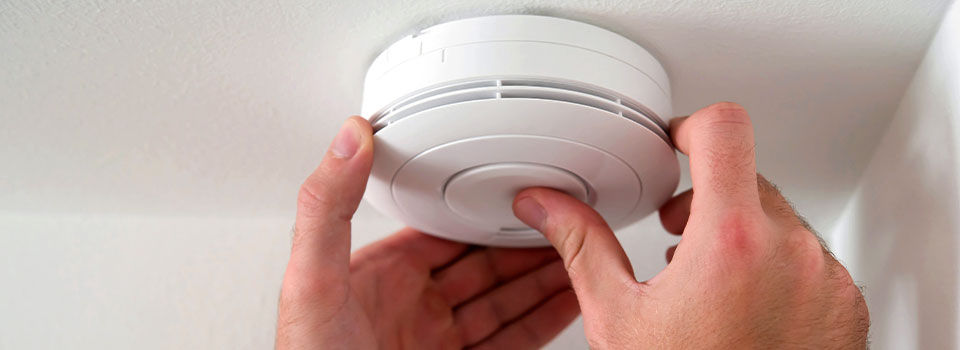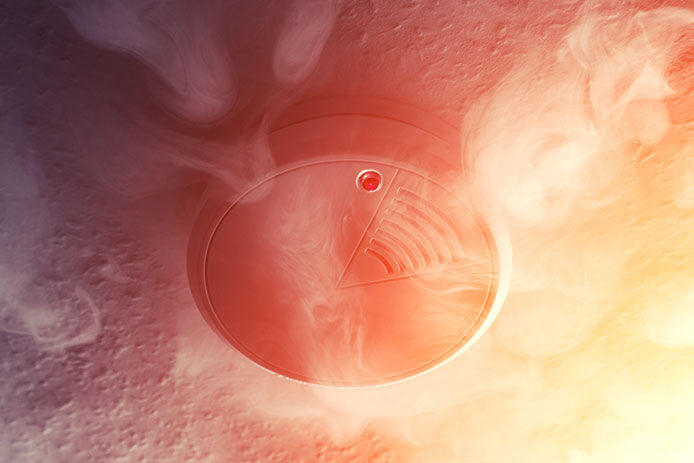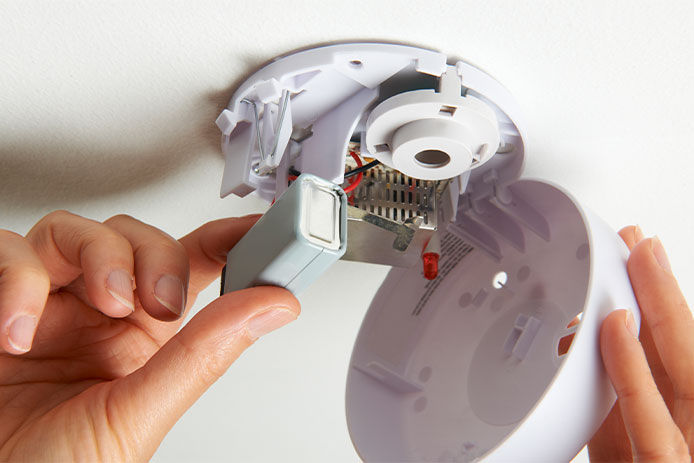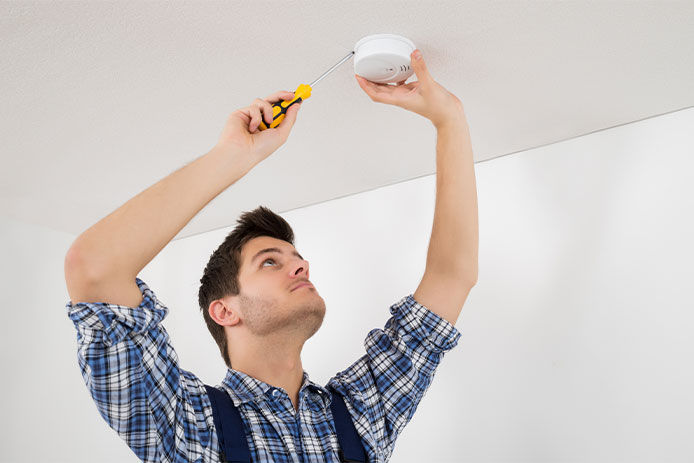What Kind of Smoke Alarm Should I Get?

Toasting up a grilled cheese sandwich under the broiler can take only a few seconds, but if you’re distracted, the bread goes past toasted and into flaming and smoking. Starting a fire inside the house doesn’t have to require a cooking mishap, either. Wiring problems, damaged electrical equipment, and even candles or space heaters can all cause life-threatening emergencies. If you install the right smoke alarms at the right locations, you can dramatically reduce the risk of a fire by getting an early warning that something’s caught ablaze. Here’s how to pick the right smoke alarm for your home.
Dual-Sensor Alarms

There are two types of technology currently available for detecting smoke in the air. Photoelectric smoke detectors rely on a visual sensor that “looks” for smoke particles in the air. This makes the sensor more receptive to thick and dark smoke created by smoldering fires. Ionization sensors use a tiny electrical reaction to determine when the air fills with smoke. They’re more sensitive to flaming and hot fires. For the best protection, look for smoke alarms that feature both types of sensors. Dual-sensor fire alarms only tend to cost a little more than models featuring a single method.
Combined Smoke and CO Sensors

To ensure you’re protected against both visible and invisible hazards, consider a smoke alarm that also includes a carbon monoxide detector. Carbon monoxide (CO) is a gas generated by various heaters, combustion appliances, and natural sources that can cause serious injury or death. It’s also invisible and impossible to detect without an appropriate alarm. The best home protection comes from smoke alarms combining both types of smoke sensors and a CO detector. This alarm will pick up every major threat in the air besides radon, which is detected with air testing kits instead. If you don’t want a combined alarm in every room, at least ensure you have separate CO sensors in every bedroom and every room with a combustion heater or appliance.
Smart Alarms

No matter how many high-tech sensors or loud alarms they feature, standard smoke alarms only work when you’re home. You’ll need a smart smoke alarm that integrates with a home security system and allows for remote alerts to truly protect your home. If you’re away at work or on vacation, a smart smoke alarm will send you a text or notify the local authorities if it goes off. This gives you a chance to catch fires that start when you’re not home, potentially saving you from thousands of dollars in property damage. Of course, smart alarms rely on home wireless or hardwired internet connections to send their signals. Make sure your home network is secure and up to date before attempting to add a smart smoke alarm or other security equipment.
Hardwired vs Battery-Operated Alarms

Hardwired smoke alarms require the help of an electrician to install, but they’re inexpensive and reliable. Most of these alarms today still include a backup battery to ensure they run when the power goes out. Since they only rarely draw power from the battery, you’ll only need to change it once every few years instead of hearing the annoying beep of a low-power alarm after a couple of months. For quick installation without worrying about wiring, stick with battery-operated models. Smart smoke alarms tend to require hardwiring, both for power and occasionally for an internet or phone connection.
How Many Alarms per Home?

No matter how small your home or apartment, one smoke alarm isn’t enough to secure the whole place. Start with a smoke alarm for each floor. Put these in the hallways or open main areas to detect general levels of smoke. Include a separate detector for each kitchen or room with a heating device, even if it’s rarely used — such as a fireplace. Bedrooms should also all have their own smoke alarms and CO detectors. Spreading smoke alarms out through a home or apartment ensures you hear the alarm as soon as a fire starts. This gives you and your family plenty of time to escape and call the fire department before the flames spread. If you only have an alarm on the first floor and you sleep on the second, you may not even hear the sound before the upper rooms are filled with smoke.
Once installed, your smoke alarms will only need a quick test every month or so to ensure they’re working properly. They’re not the fanciest part of a home security system, but they do play an essential role in protecting you and your family. Don’t forget about them or assume you’re at a low risk for a house fire.